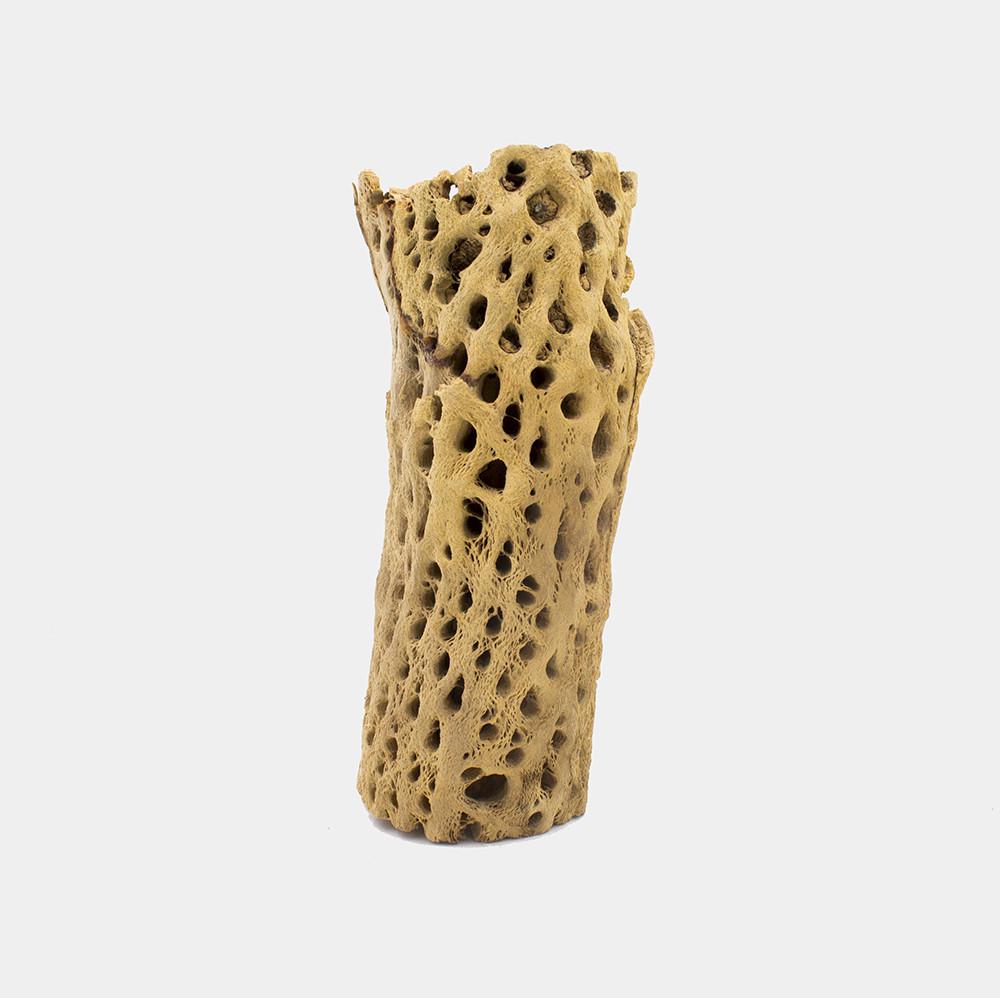 |
| cholla chunk |
Some detail about this process might prove useful to our future selves...
I found a decent photograph online and a web site that does "free" Raster-to-Vector conversions, if you have good images. I don't know how scammish this site is but, NoThanks-ing various pleading messages got me to where I could use it to convert images to vector outlines in DXF format.
https://online.rapidresizer.com/tracer.php
Strangely it worked well. I massaged the vector files to be useful to my purposes -- removing decorative and practical bits of material from some robot arms in order to slightly reduce their weight.
All the cactus files are here: My cholla files
- cholla2orig*.jpg are the original and P-shop massaged images.
- cholla3.* are the resulting vector data, and a jpg image thereof.
- cholla3ed.* are my editing of that data for use on the robot arms.
The non-orig JPG images are for reference purposes, and the .dxf files are what you need to load into a vector editing or cutter driving program. The DXF files may have bizarre scales -- the conversion came out to look like it was 64 feet wide -- so pay attention to the sizes... The .CAD files are the native format for the ancient drawing program I have.
Combining all the data, I cobbled together designs for five arms of different lengths using the different motors. So. Here. After all the measuring and converting is a motor with gears, mounted in a laser-cut robot-arm-like contraption:
 |
| arm with motor and gears |
And the DXF files: Long arm and Shorter arms. (Note that these files are preliminary and some finessing is still TBD.)
<EDIT 10/21/18> I think I fixed the files -- added spacers and other odd bits to the "shorter" one -- but still, check the mechanical hole sizes: Long arm and Shorter arms.</EDIT>
I cut the arms using the MSFe Zing laser cutter, which has some quirks. Chief among these for purposes of mechanical design is a somewhat variable kerf and a reasonable but unmentioned assumption about circular hole sizes. Fortunately the centering of holes is pretty spot on and the size assumption is that the drawn hole size is an ID -- so holes come out just about as you would expect. However, if one is cutting out round plugs, the kerf needs to be considered. Thus YMMV when using my files to try to make a copy of my arms, and test runs are advised. Also, judicious reaming and taping of holes is indicated during assembly.
More discussion of the design and gear linkage will follow...
No comments:
Post a Comment